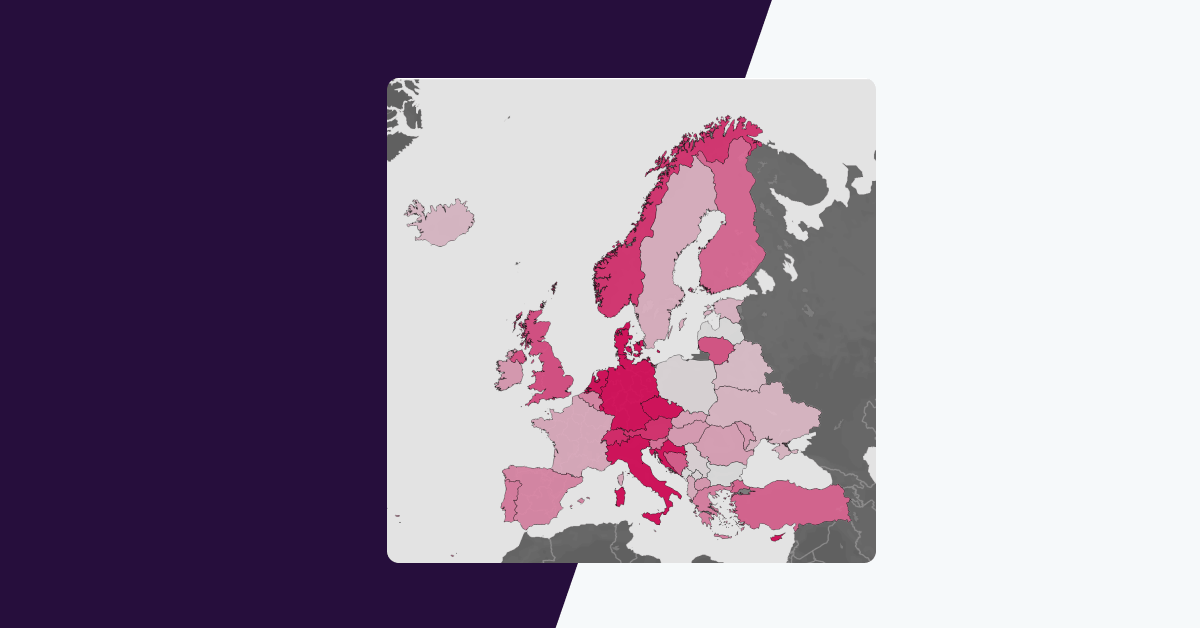Representation of historically disadvantaged groups is an issue that many organizations are struggling with, and it shows in executive leadership around the world.
The Women in the Workplace report from McKinsey & Company and Lean In revealed that in the U.S., the representation of white men increases from 35% of entry level employees to 62% of the C-Suite. Contrast that with representation for women of color, who are 17% of entry level positions, but only 4% of the C-Suite. Data from the European Commission shows a similar problem for the percentage of women who are managers in European countries, with the European Union averaging just slightly over 35%.
The problem for most companies is that they’re unsure how to begin analyzing and improving their representation. In our recent How to Improve Representation Using Data and Analytics webinar, Syndio’s Rebecca Scully and Chris Martin, and Marie Konstance from Catalyst, addressed this question. Here are some key points from their discussion.
Why should you care?
Marie Konstance pointed out that there are two main reasons for companies to care about representation, and those are to:
- Maximize your people
- Minimize risk
“Both of those are clear business objectives. People now want to have a company with good corporate values, and diversity is one of the key values they look for. So to attract the best talent of any background or gender, you really do need to show that you have a commitment to diversity, not just a performative case for diversity.
“Once people enter your workforce, diversity helps maximize their satisfaction. It reduces turnover. This is research that Catalyst has done for years, and it always plays out. It increases feelings of inclusion and increases job satisfaction. We’ve found that 35% of job satisfaction comes from feelings of inclusion.
“And on the other side, there’s risk mitigation and that’s very important as well. We’ve all seen companies that have ended up on the front page of the New York Times and the Wall Street Journal for the wrong kind of press. They haven’t had fair pay practices or fair promotion practices. And this is not only a bad look and wrong, but it’s costly in terms of time.”
Where do you start?
Chris Martin discussed a framework for how to improve representation in your organization using data and analytics, suggesting that you ask four questions:
- What do we look like today in terms of gender, race, etc.; job level; org structure; and location?
- What should we look like based on internal availability; labor pool talent; and/or community demographics?
- What can we do to improve, including methods such as identifying root drivers; examining company-wide vs. targeted issues; and prioritizing?
- How do we talk about it in terms of level of detail; audience; and voluntary vs. involuntary disclosure?
“After you’ve got a picture of the demographics of your organization, you’ll want to know, ‘What should we look like?’ And obviously the answer is different depending on location, industry, and other factors.
“But then you look at, ‘What can we do to improve, or alternatively, what got us into this situation?’ What piece of the employee lifecycle is not working for women, or employees of color, or employees with disabilities?
“And once you understand that, the last question is, ‘How do I talk about this to my stakeholders — employees, executive leadership team, managers, and shareholders?’”
How do you conduct a representation analysis?
Rebecca Scully walked through a representation analysis using Syndio’s OppEQ® solution, explaining how to examine representation of protected categories of employees across job groups and levels. For her example, she chose the Engineering department of a sample company and compared men and women in that group. The analysis broke out roles from individual contributor through executive, and added labor pool benchmarks to show how the department’s representation compares to external labor pools. In this example the Engineering group is 65% men and 30% women, and at the Manager level, only 8% are women compared to 25% for the external labor force.
“The reason that matters is because not only will inequities in your Engineering team impact your overall diversity numbers, but they’re also going to impact your unadjusted median pay gap, which is increasingly a metric that companies are taking a hard look at.”
Next, Rebecca looked at a forecast of how long it will take the department to arrive at 25% female representation at the manager level.
“So by modeling out this analysis, we quickly see that in a five-year time horizon, we are not going to reach our goal. In fact, we’re not going to reach the goal until 2028 if we hold all of those mobility metrics constant. So this is a great analysis to start to model out different scenarios.
“Many companies today may be experiencing a hiring freeze. It’s a tight labor market, so they may not be growing at the rates that they were before, but maybe they can focus more on retention and reducing their attrition numbers. So this is a chance to model scenarios such as, if we took that 10% attrition rate and reduced it to 8%, would that bring that time horizon down to reach our goal for women in engineering at the management level? Where can we focus our efforts to have the biggest impact and achieve our goals faster?”
What do you do once you’ve identified issues?
Once you’ve identified where a problem might be and where you might want to focus, Marie explained, you need to understand the why before you do anything.
“Why is this a problem? Sometimes the cause is not what you think. For example, there was a very large bank that we were dealing with, and they had an enormous amount of attrition at the first level of management. The assumption by some senior members was, well, women are staying home, they’re staying with their children. It’s a traditional kind of assumption, but when they actually delved into it with exit surveys and post exit surveys, they found that by and large, the women were not staying home. They were leaving for someplace else.
“The leadership team started to realize that their policies weren’t as inclusive as they thought, and didn’t make women who had hit the first level of management feel comfortable in staying. That called for a policy intervention. So the first thing to remember is not to assume you know the solution until you’ve dug a little bit deeper.
“But then there are wonderful policies, interventions you can do, and I’m just going to talk about a few of them. If you can’t find people to hire, you can do some very simple things:
- You can widen your net; for example, schools that you talk to.
- You can change your job descriptions to focus on just the most important things, because research has found over and over again that women will not apply to a job unless they feel confident that they have all the criteria, where men are more likely to apply if they have most of the criteria.
- You can also make your language in your job description more inclusive. There is certain language that appeals to men more than women.
- When you’re targeting promotions, you can ask, ‘Am I giving people that are underrepresented more stretch assignments, more sponsorship opportunities, more international exposure, things that prepare people and set them up for success and the next management level?’
“These are subtle things, but easy changes that can make a big difference. So there are a ton of things you can do that can really make a difference, sometimes with very little cost, but with a change of mentality and a change of approach. There’s lots of literature on this.”
Want more?
Representation analysis is not simple, but it is important for reaching your diversity goals. The quotes above are just a few of the top highlights from the webinar — watch the on-demand recording for the full discussion on how to improve representation at your organization using data and analytics.
The information provided herein does not, and is not intended to, constitute legal advice. All information, content, and materials are provided for general informational purposes only. The links to third-party or government websites are offered for the convenience of the reader; Syndio is not responsible for the contents on linked pages.


